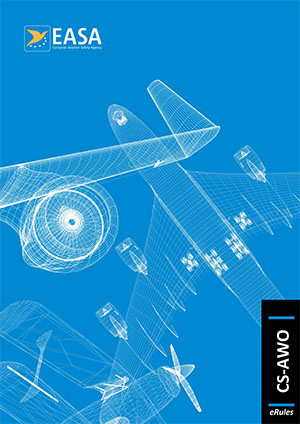ED Decision 2022/007/R
The effects of failures of the flight guidance system, including the on-board navigation receivers, shall be considered in accordance with CS 25.1309 and CS 25.1329.
[Issue: CS-AWO/2]
AMC AWO.B.SACATI.119 Failure conditions
ED Decision 2022/007/R
In compliance with CS 25.1309 and CS 25.1329, failures of the flight guidance system, including on-board navigation receivers, which would require pilot recognition in relation with external references as required by AMC5 SPA.LVO.105(c) point (d), should be demonstrated in the actual visual references available on a SA CAT I (or equivalent type sought) runway (see CS AWO.B.SACATI.117).
[Issue: CS-AWO/2]
CS AWO.B.SACATI.120 Failure of xLS navigation means (facilities external to the aircraft, including signal-in-space)
ED Decision 2022/007/R
(See AMC AWO.B.SACATI.120)
The effects of failures and the reliability of the navigation means (facilities external to the aircraft, including signal-in-space) shall be investigated taking into account the SARPs of ICAO Annex 10 relevant to the characterisation of failures (e.g. monitor thresholds, time-to-alert and transmitter changeover or shutdown times).
[Issue: CS-AWO/2]
AMC AWO.B.SACATI.120 Failure of xLS navigation means (facilities external to the aircraft, including signal-in-space)
ED Decision 2022/007/R
The effect of detected and undetected failures of the navigation means (facilities external to the aircraft, including signal-in-space) intended to be used for the operation should be considered. The guidance of this Section is intended to address non-aircraft system errors. Due to the fact that low‑visibility procedures (LVPs) are in place for SA CAT I operations, the effects of interruption or disturbance of the ground navigation means by surface movement in sensitive or critical aerodrome areas does not need to be considered.
A description of the possible fault modes of the navigation means (facilities external to the aircraft, including signal-in-space) that are derived from ICAO Annex 10 Volume I can be found in Appendix 1 to AMC to Subpart A. It includes a description of detected failures and the probability of undetected failures. In the demonstration, credit may be taken for the ground subsystem’s probability of undetected failures.
Note: Detected localiser and glide (or equivalent) threshold and time-to-alert and probability of undetected failures depend on the class of the navigation means. Demonstration made for CAT II/III systems may not be applicable for lower-class navigation means.
Failures of the navigation means (facilities external to the aircraft, including signal-in-space) which would require pilot recognition in relation with external references (as required by AMC5 SPA.LVO.105(c) point (d)) should be demonstrated in the actual visual references available on an SA CAT I (or equivalent type sought) runway (see CS AWO.B.SACATI.117).
Navigation means (facilities external to the aircraft, including signal-in-space) should ensure a minimum vertical clearance of 1 m (3 ft) from the obstacle clearance surface, including height loss during the missed approach if applicable in the event of a failure (detected or undetected). If flight crew action is required to trigger a missed approach procedure, a standard delay of 1 s should be considered after flight crew detection. The probability of exceeding the 1 m (3 ft) clearance from the obstacle clearance surface due to navigation means shall be demonstrated to be lower than 10–7 per approach. In addition, if automatic landing is provided, it should be demonstrated that the probability of landing outside the limits that define a safe landing due to navigation means is lower than 10–7.
The effect of the probability of failure of the navigation means (facilities external to the aircraft, including signal-in-space) should be considered and the effect on the go-around rate should be investigated.
[Issue: CS-AWO/2]
CS AWO.B.SACATI.121 Radio altimeter (or other device capable of providing equivalent performance and integrity level)
ED Decision 2022/007/R
The radio altimeter (or other device capable of providing equivalent performance and integrity level) installation shall be such that the probability of the provision of false height information leading to a hazardous situation is extremely remote. If compliance is based on monitoring, the detection of a failure shall lead to the removal or obscuration of displayed information, at least in the height band from 45 m (150 ft) downwards.
[Issue: CS-AWO/2]
CS AWO.B.SACATI.122 Excess-deviation alerts
ED Decision 2022/007/R
The excess-deviation alerts shall be such that the probability of failure to operate when required is no greater than one in one thousand approaches.
[Issue: CS-AWO/2]
